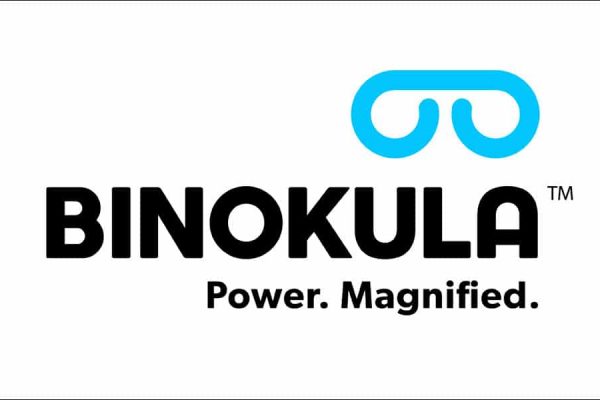Goal focused conversations can be the bridge to getting CEOs or tech decision-makers across the line with transformative technology solutions, say two technology industry CEOs.
In today’s online business environment the speed of technological change is ranked among the top eight threats to business – with 29 percent of business leaders surveyed reporting being extremely concerned according to PwC’s 23rd Annual Global CEO survey. Navigating the seemingly choppy, and still relatively new, waters of technological change isn’t easy. So, in this article we’ll look at technology communication, drawing on the experience of two of our Cloud partnering innovators.
The point of technology – value for the C-Suite

For technology conversations to be fruitful it’s essential that they tie in with business goals and outcomes. John McDermott, the CEO and one of the founding partners of leading New Zealand data analytics company Stellar Consulting explains. “The C-suite wants to achieve its business goals and outcomes. Therefore, in any technology conversation, you need to focus on the positive business outcomes that will be realised by adopting better technology. CEOs and technology decision-makers appreciate the benefits of improved technology. They understand what investment they require.”
A clear focus on business processes and outcomes is even more essential in the current economic climate. “With the current uncertainty in the global economic environment, organisations are looking to improve efficiencies and reduce costs,” says McDermott. “This means that conversations are centred around how to leverage technology to achieve these goals while also ensuring future stability and certainty with technology investments.”
Technology conversations – evolving rapidly
With a daunting number of rapid tech advances in the form of investments and innovations from labs, startups and R&D centres, technology concepts are far from static. Therefore what it takes to talk meaningfully about technological innovation will differ from organisation to organisation depending on need.
The businesses have historically focused on managing people and process, and less on the nitty-gritty of technological solutions. Denis O’Shea, founder and CEO of international workplace consultancy Mobile Mentor, explains that “5-10 years ago tech conversations with C-suite had to be financially grounded with lots of focus on RoI or NPV – [sic] Return on Investment or Net Present Value – but glossed over the tech itself for fear of losing the interest of the audience.”
O’Shea comments that the increased understanding of the potential and real impact of technology on business is surprising. One of the benefits of the maturation of the technology industry has been fostering greater willingness to discuss the contribution that technological innovation can make to the business. As O’Shea explains, “everyone seems to be more tech-savvy now. Maybe because we all use more technology in our lives but also the industry has matured. It is much better at design and creating desirable technologies. The tech industry is also much better at articulating outcomes and benefits. As a result, I think is okay in this day and age to talk in some depth about experience, security and automation with clients.”
Cloud computing capabilities have changed the game with technology discussions at the board table. John McDermott, CEO of data advisory Stellar Consulting, explains that its increased adoption has expanded on organisational capability in profound ways, and enabled businesses to escape capital costs and tap into deeper technology domains that generate more effective change-driving processes.
The Cloud “has allowed organisations to access new technology at speed, access technology via micro-services that they traditionally wouldn’t have had access to due to cost and complexity, and streamlined the processes around managing and implementing technology with the advent of approaches such as ‘Agile’ and ‘DevOps’”, McDermott comments.
COVID-19 – a game-changer

An obvious tipping point for technology has been COVID-19. It has led to a significant uptake of digital technology adoption, with intensified interest from C-suites. O’Shea explains that before COVID-19 innovation was a key topic of technology discussions with executives. But that there are differences between the ‘before and after’ of the pandemic.
First, he believes COVID-19 is something of a tipping point for business, with lowered hierarchies and greater resonance between viewpoints. There’s “a greater sense of empathy for remote workers… [it has] created great awareness of the employee experience in business, especially for people who are remote,” he explains. “Many people went through this experience at the same time so it was a great equaliser.”
“One of the positive aspects of COVID 19 was that everybody was suddenly on the same level. Everybody was dealing with the same issues, sharing domestic internet with the TikTok and Fortnite generation, back-to-back meetings and video-fatigue.” Second, O’Shea stresses there “is a sense of urgency to modernise and enable people to have the same experience at home as in the office.”
Third has been the realisation that “modern endpoint management is the key to productivity”. “Some companies were caught with legacy technology. Their employees were unable to be productive at home. In many cases, this was due to challenges of provisioning new devices or VPN congestion, passwords expiring or devices not being patched. Companies who had embraced modern device management, cloud data, password-less authentication and zero-touch provisioning were in a different place.”
Overcoming the technology conversation challenges
Even though technology already has a proven contribution to business goals and outcomes technology leaders should take care to avoid focusing solely on technological innovation, or inadvertently undermining other concerns that may be top of mind for the C-suite. McDermott explains that this can very quickly lead to a loss of interest: “If the conversation dwells on ‘talking tech’ for too long, then they quickly become uninterested and the conversation about benefits quickly becomes one about the cost.”
There are real differences between how different industries and departments understand the world. As O’Shea points out, organisations can be diverse and complex. Different departments can struggle with being on the same page with technology. Silos pervade many industries, and with that comes a slippery slope of misunderstandings and costs.
O’Shea explains that there are real differences in understanding and insight between specialisations. Technology concepts and benefits won’t always be obvious. Speaking of the higher education industry he explains, “there are different agendas at the C-suite”, and he recommends that savvy tech communicators “listen and observe how your audience talks about technology among themselves.”
CEOs might not be clear on whether they’re ready for a transformation. Our job, as technology advocates, is to point them in the most tech-savvy direction, and show them why it’s essential.
Is alignment enough, or is convergence key?
Most businesses understand the importance of aligning technology to company priorities, with technological decisions coming second, yet Deloitte’s 2020 Global Technology Leadership Study finds that agile C-suite executives aims of technology leadership are becoming more change-oriented and engaged throughout the entire innovation lifecycle. Technology experts are driving creative, productive and sustainable businesses. And technology doesn’t need to just fit in with pre-established business goals any more.





